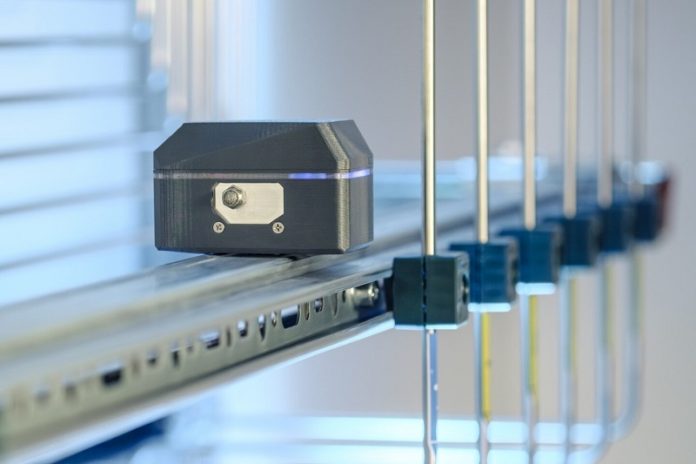
The ultrasonic sensor can be used to monitor hydrogen tanks, pipelines or connectors. The sensors can also be placed around a room like smoke detectors to form a network. Credit: Fraunhofer-Gesellschaft
Hydrogen is a promising clean energy source, but it comes with safety challenges.
It is invisible, odorless, and highly flammable, making leaks difficult to detect.
To address this, researchers at the Fraunhofer Institute for Physical Measurement Techniques (IPM) in Germany have developed advanced sensors that can quickly and accurately detect hydrogen leaks.
These new technologies will help make hydrogen transport and storage safer, ensuring a smooth transition to a hydrogen-powered future.
**Why hydrogen safety matters**
Hydrogen is widely used in industries and is expected to play a major role in the clean energy transition.
However, storing and transporting it safely is a challenge. Leaks in pipelines, tanks, and connectors can be dangerous because hydrogen is highly explosive.
That’s why researchers have developed new **sensor systems** that detect even the smallest hydrogen leaks.
The research is part of **TransHyDE**, a German government-funded project focused on hydrogen transport and storage solutions.
Fraunhofer IPM, along with industry and research partners, is working to ensure that hydrogen infrastructure is **safe and reliable**.
**Three types of hydrogen sensors**
Since hydrogen is used in many different ways, the Fraunhofer team developed **three sensor systems** to cover a variety of situations.
1. **Ultrasonic Sensor with Photoacoustic Effect**
This sensor works by using **light to create sound waves** inside a container. If hydrogen enters through a membrane, the sound waves change, signaling a leak. MEMS (micro-electromechanical systems) microphones detect these changes.
This sensor can be placed around a room like smoke detectors, forming a **safety network**. It can also be used to **check hydrogen purity**. Fuel cells, like those in hydrogen-powered trucks, need very pure hydrogen. Even small impurities can damage them. This sensor ensures the hydrogen is clean and safe to use.
1. **Laser Spectrometer for Ammonia Detection**
Hydrogen is often stored and transported in high-pressure tanks or as a liquid at -253°C. Another method is to use **ammonia (NH₃) as a hydrogen carrier** since it is easier to store. However, ammonia is toxic, so leaks must be detected quickly.
Fraunhofer’s **laser spectrometer** absorbs the wavelength of ammonia and reacts instantly. A display shows the results in real-time. Experts can use this **handheld device** to check for leaks from a safe distance—up to 50 meters away. It can also be **mounted on drones or robots** to inspect large industrial sites and pipelines.
1. **Raman Spectroscopy for Hydrogen Detection**
The third sensor system uses Raman spectroscopy, which analyzes how light interacts with different substances. Since each material has a unique “fingerprint,” this method can accurately identify hydrogen in complex environments.
This portable Raman sensor is cost-effective and can be used as a mobile testing station to measure hydrogen levels. It is useful in energy production and other hydrogen-related industries.
These innovative sensors are designed to be adaptable and versatile, helping industries, energy companies, and governments safely expand hydrogen use. Fraunhofer experts also offer guidance on hydrogen safety solutions.
Dr. Carolin Pannek, project leader at Fraunhofer IPM, believes hydrogen has a bright future: “The expansion of the hydrogen economy can start now.” With advanced sensors ensuring safety, hydrogen can become a key part of the clean energy revolution.